
|
|
|
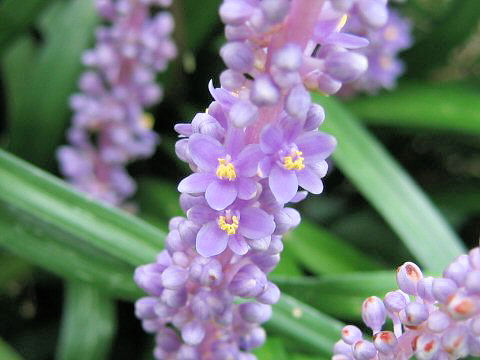 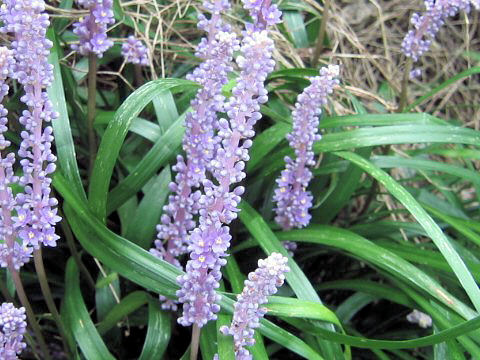 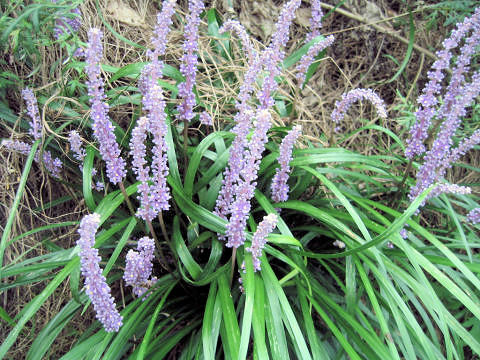 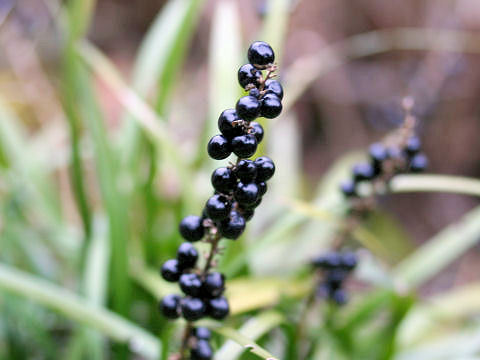 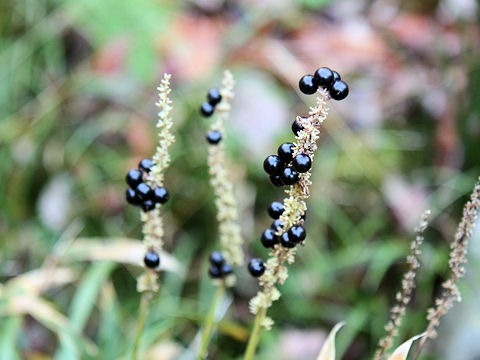 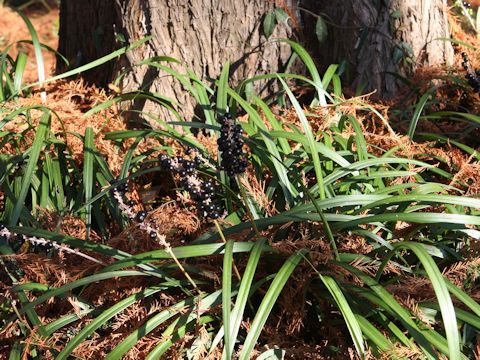 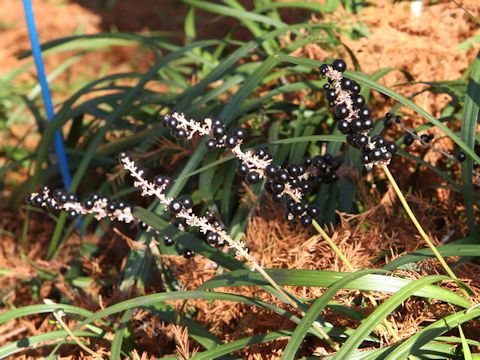 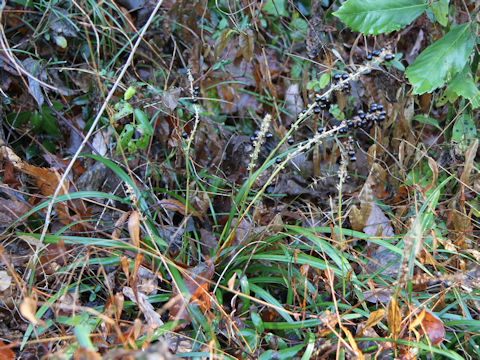 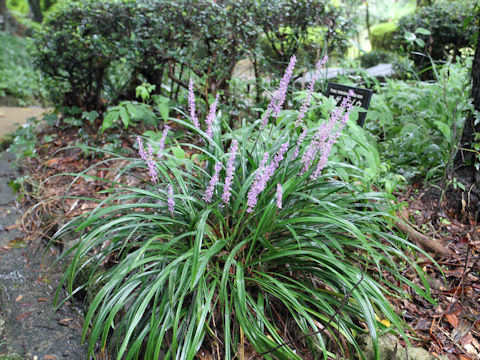 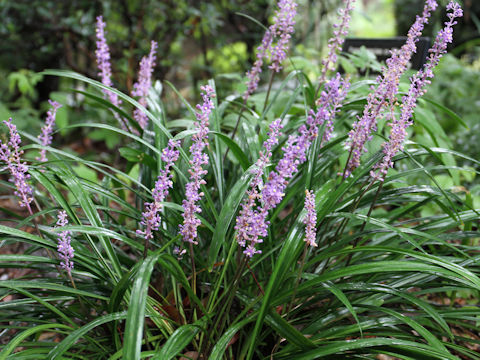 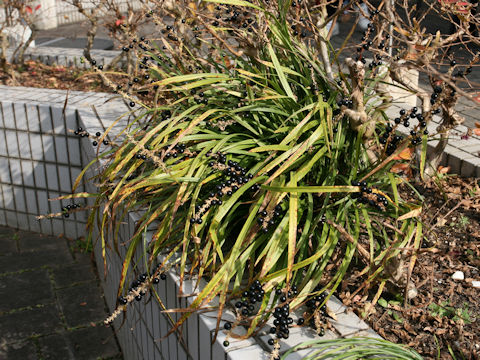 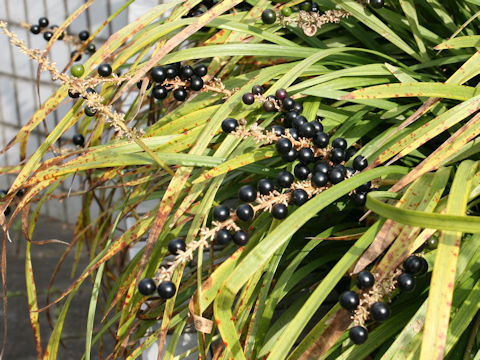 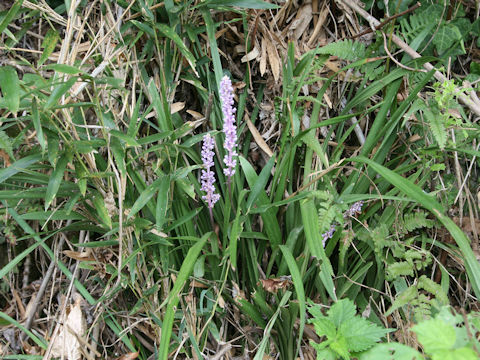 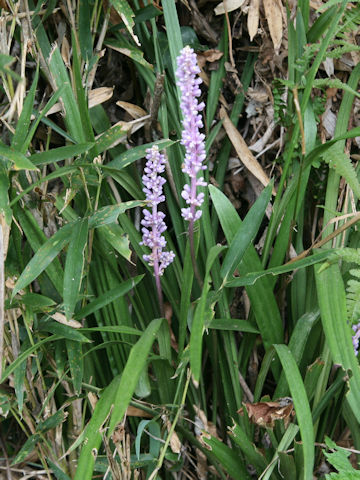 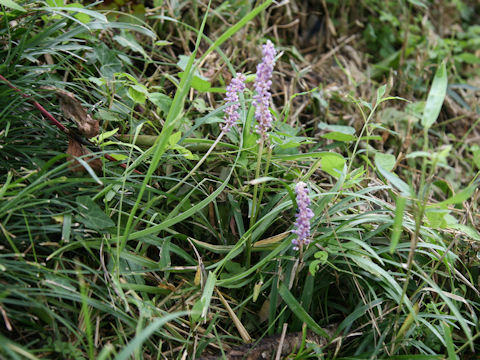 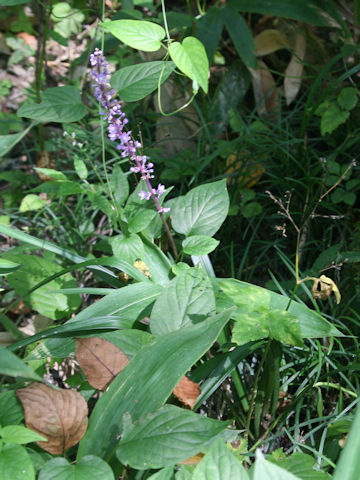 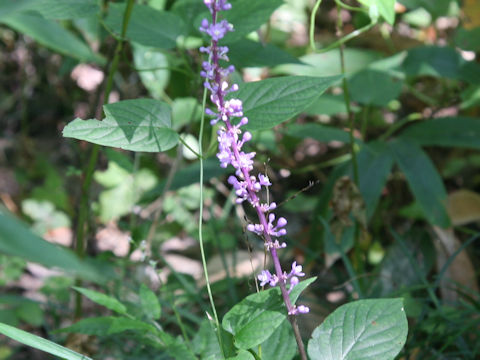 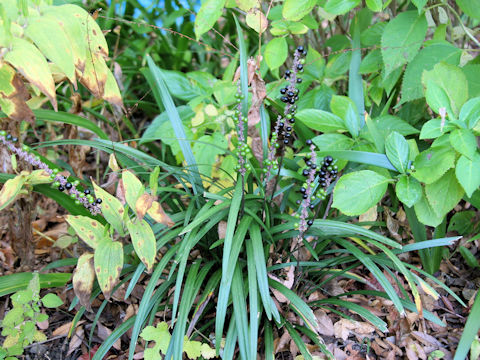 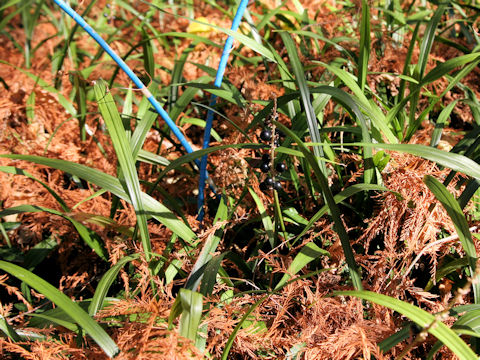 |
|
|
|
�킪���̖{�B�A�֓��n���Ȑ�����l���E��B����ɑ�p�⒩�N�����A�����ɕ��z���Ă��܂��B�t�͐��`�܂��͐����j�`�ŁA�����Ƃɏd�Ȃ��Ă��܂��B�W������P�O������A���ԏ��������Ԏ��F�̉Ԃ��炩���܂��B�ʎ������ʂŁA���̉ʔ�͏n���O�ɗ����A�����F�̎�q���ނ��o���Ȃ��ĉʎ��̂悤�Ɍ����܂��B�܂����͊�����Ƃ��ėp�����A���P�A��ႁA���{���s�Ȃǂ̌��ʂ�����Ƃ����܂��B�a���́A�M��т̒��ɐ����A�t���u���v�Ɏ��Ă��邱�Ƃ���B��p�،�ł́u舗t�m��~�v�A������ł́u舗t�R���~�ikuo ye shan mai dong�j�v�ƌĂ�܂��B |
|
|
�����ȃ��u�������̏�Α��N���ŁA�w���� Liriope platyphylla (syn. Liriope muscari var. communis)�B�p���� Big blue lilyturf�B |
|
|
The Big blue lilytuft (Liriope platyphylla) belongs to Liliaceae (the Lily family). It is an evergreen perennial herb that is distributed from Kanto district of Honshu to Shikoku and Kyushu of Japan, as well as Taiwan, the Korean Peninsula and China. The leaves are linear to linear-lanceolate and ovarlap at base. The magenta flowers bloom in the spikes from August to October. Following bloom the fruits ripen into blackish purple. Its roots are used for Chinese herbal medicine which has effects on antiussive, expectorant and alimentation. The Japanese name "Yabu-ran" is derived from growing in bushes and resembling orchid-leaves in appearance. It is called "舗t�m��~" in Taiwanese Chinese and "舗t�R���~" (kuo ye shan mai dong) in Chinese. |
|
|
[��E���P�`�Q] ���R�����쒬�����ɂāA2004�N08��25���B�e�B [���R] �É����Ő쒬���[�ɂāA2006�N02��27���B�e�B [���S] �����s�u�ԃt�F�X�^�L�O�����v�ɂāA2006�N12��20���B�e�B [���T�E���U] ��錧���ˎs�u���ˎs�A�������v�ɂāA2012�N12��08���B�e�B [���V] ��錧�헤���c�s�u�瑫�R�v�ɂāA2014�N12��21���B�e�B [���W�E���X] �����s������u�����s�A�����v�ɂāA2017�N10��06���B�e�B [���P�O�E���P�P] �{�錧���s���u���k�c�����v�ɂāA2020�N11��07���B�e�B [���P�Q�`���P�S] �{�錧���c���u�����̐A���Q���v�ɂāA2024�N08��21���B�e�B [���P�T�E���P�U] �{�錧���s���u�^��������v�ɂāA2024�N09��10���B�e�B [���P�V] �{�錧���s������u���s�쑐���v�ɂāA2024�N11��10���B�e�B [��] ��錧���ˎs�u���ˎs�A�������v�ɂāA2024�N11��30���B�e�B |

|
|
Shu Suehiro |